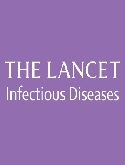Posted on December 18, 2014
Source: The Lancet Infectious Diseases

Dr Sunil Suhas Solomon, MBBS, Prof Shruti H Mehta, PhD, Aylur K Srikrishnan, BA, Prof Suniti Solomon, MD, Allison M McFall, MHS, Oliver Laeyendecker, PhD, Prof David D Celentano, ScD, Syed H Iqbal, PhD, Santhanam Anand, BSc, Canjeevaram K Vasudevan, BSc, Shanmugam Saravanan, PhD, Gregory M Lucas, MD, Muniratnam S Kumar, MD, Prof Mark S Sulkowski, MD, Prof Thomas C Quinn, MD
Background
90% of individuals infected with hepatitis C virus (HCV) worldwide reside in resource-limited settings. We aimed to characterise the prevalence of HCV, HIV/HCV co-infection, and the HCV care continuum in people who inject drugs in India.
Methods
14 481 people (including 31 seeds—individuals selected as the starting point for sampling because they were well connected in the drug using community) who inject drugs were sampled from 15 cities throughout India using respondent-driven sampling from Jan 2, 2013 to Dec 19, 2013. Data from seeds were excluded from all analyses. HCV prevalence was estimated by the presence of anti-HCV antibodies incorporating respondent-driven sampling weights. HCV care continuum outcomes were self-reported except for viral clearance in treatment-experienced participants.
Findings
The median age of participants was 30 years (IQR 24–36) and 13 608 (92·4%) of 14 449 were men (data were missing for some variables). Weighted HCV prevalence was 5777 (37·2%) of 14 447; HIV/HCV co-infection prevalence was 2085 (13·2%) of 14 435. Correlates of HCV infection included high lifetime injection frequency, HIV positivity, and a high prevalence of people with HIV RNA (more than 1000 copies per mL) in the community. Of the 5777 people who inject drugs that were HCV antibody positive, 440 (5·5%) were aware of their status, 225 (3·0%) had seen a doctor for their HCV, 79 (1·4%) had taken HCV treatment, and 18 (0·4%) had undetectable HCV RNA. Of 12 128 participants who had not previously been tested for HCV, 6138 (50·5%) did not get tested because they had not heard of HCV. In the 5777 people who were HCV antibody positive, 2086 (34·4%) reported harmful or hazardous alcohol use, of whom 1082 (50·4%) were dependent, and 3821 (65·3%) reported needle sharing. Awareness of HCV positive status was significantly associated with higher education, HIV testing history, awareness of HIV positive status, and higher community antiretroviral therapy coverage.
Interpretation
The high burden of HCV and HIV/HCV co-infection coupled with low-access to HCV services emphasises an urgent need to include resource-limited settings in the global HCV agenda. Although new treatments will become available worldwide in the near future, programmes to improve awareness and reduce disease progression and transmission need to be scaled up without further delay. Failure to do so could result in patterns of rising mortality, undermining advances in survival attributed to widespread HIV treatment.